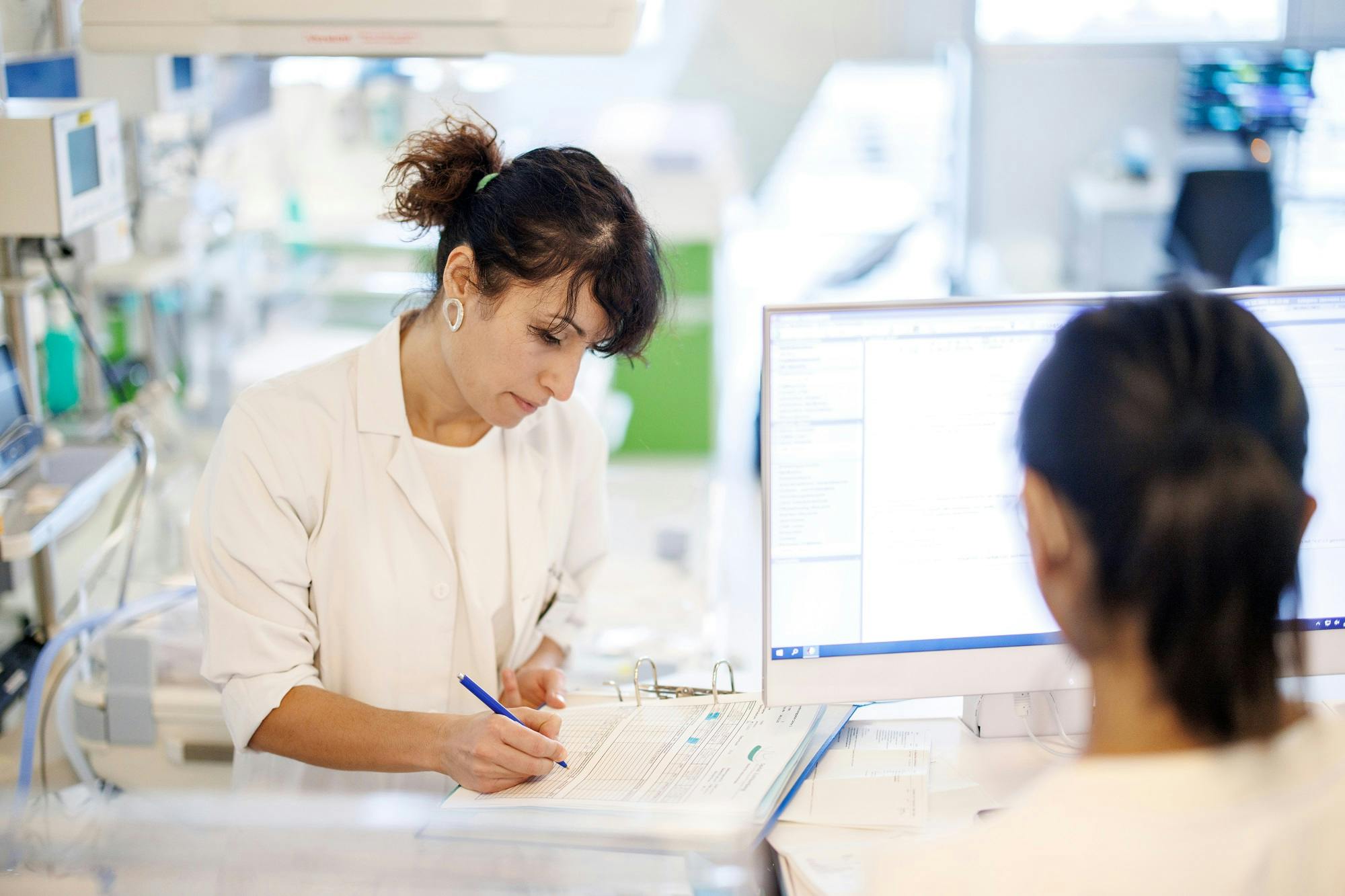Renal replacement therapy - what is dialysis?
Silvana Tenini
June 12, 2023
4 min
Dialysis is a medical procedure that removes harmful substances from the blood. Silvana Tenini, Head of Dialysis, answers interesting questions about the most common renal replacement procedures, when they are used and how they work.
What is dialysis?
The word dialysis comes from the Greek and means "separation" or "detachment". Dialysis is a medical procedure in which the function of the kidney is partially or completely taken over. It is used for acute or chronic disorders of kidney function.
A healthy kidney excretes waste products, toxins and excess water. In the case of kidney disease, dialysis replaces these functions.
When is dialysis carried out?
If kidney function is less than 15 per cent in the long term and symptoms such as reduced performance, nausea or vomiting, weight loss and derailed blood pressure are evident, then dialysis therapy should be started.
What types of dialysis are there?
There are basically two different types of dialysis: haemodialysis and peritoneal dialysis.
Haemodialysis, also known as "blood washing", is carried out in a dialysis centre using a dialysis machine. In this procedure, the patient's blood is pumped through a dialysis filter and thus "washed" outside the body. The purified blood then flows back into the body. The patient must be connected to a dialysis machine for several hours three times a week. The blood circulates through the filter several times during each session. In addition to cleansing the blood, fluid is also removed.
In peritoneal dialysis, blood washing takes place in the abdominal cavity. The body's own peritoneum is used as a natural filter organ. Fluid is introduced into the abdominal cavity through a catheter. This remains in the abdominal cavity for a few hours and is then replaced by a new fluid. In peritoneal dialysis, fluid is therefore constantly present in the abdominal cavity.
Patients usually carry out peritoneal dialysis independently and at home. Each patient normally decides for themselves which procedure is suitable.
How long does a dialysis procedure usually take? How often does dialysis have to be carried out?
Haemodialysis usually lasts between four and five hours and takes place three times a week.
In the case of peritoneal dialysis, a bag change is carried out five times a day. The patient needs around 20 minutes per bag change. The time the fluid remains in the abdominal cavity varies between three to six hours during the day and up to ten hours at night.
0/0
Silvana Tenini
Ward manager dialysis centre
Weitere Beiträge
Counsellor
Stress - when body and soul get loud: what you should know
Stress is almost part of everyday life in our fast-paced world. However, if it becomes ingrained and repeatedly throws our everyday life out of balance, it can become a burden for body and mind. We would like to offer you some guidance in this article: What happens when you are stressed, how do you recognise that it is time to pause and how can you find peace and balance again?
Counsellor
Hormone fluctuations in winter: What's really behind them?
Many women experience changes in their physical and mental well-being in winter. They feel tired more often, less resilient or more emotionally sensitive. Cycle changes or more intense premenstrual symptoms are also noticed more often during this time. In addition to external factors such as the cold, less exercise or a change in lifestyle, hormonal processes can also play a role.
Counsellor
Spinal surgery: everything you need to know
At Zollikerberg Hospital, the highest precision applies to one of the most central and at the same time most demanding areas of the body - the spine. Spinal surgery here means not only modern, minimally invasive technology, but above all sound expertise, experience and careful, holistic care. This is what Dr Filippo Mandelli, Head of the Spinal Surgery Clinic, and his team stand for. They treat conditions such as herniated discs, spinal canal stenosis, spondylolisthesis, spinal deformities and degenerative changes competently and sensitively and accompany patients on their way to greater stability and quality of life. In this interview, you can find out what is particularly important in these complex interventions - and what modern spinal medicine can achieve today.


